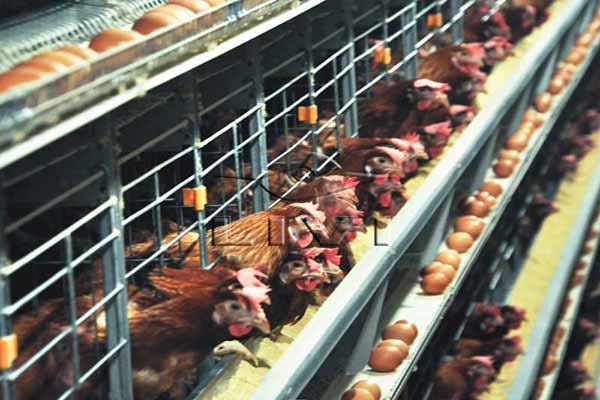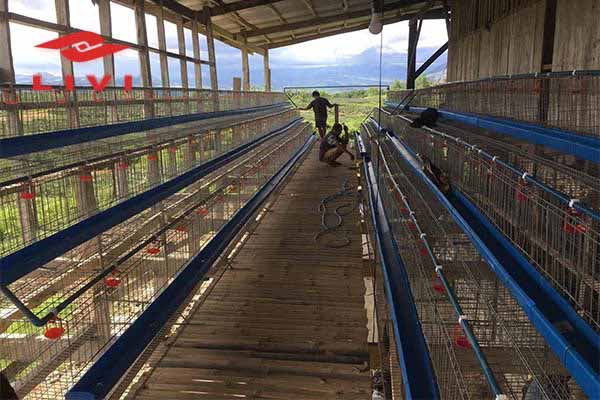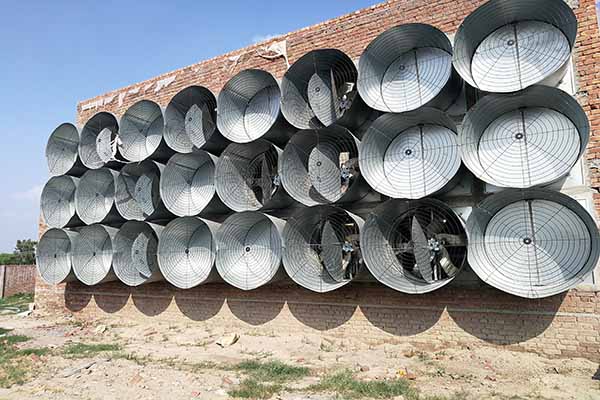Understanding Automatic Poultry Cages: Cost and Availability Insights
Time : 2025-07-04
In the modern poultry industry, the use of automatic poultry cages has become increasingly popular due to their efficiency and cost-effectiveness. However, understanding the cost and availability of these automated systems is crucial for any poultry farmer looking to invest in them. This article will delve into the intricacies of automatic poultry cages, their cost, and availability, providing valuable insights for professionals in the field.

The Benefits of Automatic Poultry Cages
Automatic poultry cages are designed to improve the living conditions of poultry while increasing productivity and reducing labor costs. Here are some of the key benefits:
- Enhanced Poultry Welfare: Automatic cages provide more space per bird, reducing stress and allowing for better air quality and temperature control.
- Increased Productivity: Automation simplifies processes such as feeding, watering, and waste management, resulting in a more efficient production cycle.
- Cost-Effective: While the initial investment may be high, the long-term savings on labor, feed, and other costs can offset this expense.
Factors Influencing the Cost of Automatic Poultry Cages
The cost of automatic poultry cages can vary widely depending on several factors:
1. Size and Capacity
The size and capacity of the cage system are primary fact ors affecting cost. Larger systems designed for commercial operations will be more expensive than smaller systems for backyard or hobby farms.
ors affecting cost. Larger systems designed for commercial operations will be more expensive than smaller systems for backyard or hobby farms.
2. Features and Automation Level
Cages with advanced features such as automated feeding, watering, and waste removal systems will be more expensive than basic cages. The level of automation will significantly impact the overall cost.
3. Material Quality
The quality of materials used in the construction of automatic poultry cages can also influence the cost. Higher-quality materials such as stainless steel or galvanized steel may increase the price but provide greater durability and resistance to corrosion.
4. Brand and Manufacturer
The brand and manufacturer of the poultry cage system can also impact the cost. Some brands may offer higher-quality products at a premium price, while others may offer competitive pricing with similar quality.
5. Installation and Maintenance Costs
In addition to the purchase price, installation and maintenance costs should be considered. Professional installation may be required, and ongoing maintenance is essential to ensure the longevity of the system.
Availability of Automatic Poultry Cages
The availability of automatic poultry cages depends on various factors, including the region, local regulations, and market demand. Here are some key points to consider:
1. Market Demand
The demand for automatic poultry cages in a particular region will influence the availability and pricing. Areas with a growing poultry industry or stricter regulations on animal welfare may have a higher demand for these systems.
welfare may have a higher demand for these systems.
2. Local Regulations
Local regulations and zoning laws can impact the availability of automatic poultry cages. Some regions may have restrictions on the size or type of poultry operation allowed.
3. Import and Export Policies
For regions that do not have local manufacturers, the availability of automatic poultry cages may depend on import and export policies. Tariffs and trade agreements can affect the cost and availability of imported systems.
Conclusion
Investing in automatic poultry cages can be a game-changer for poultry farmers looking to improve efficiency, productivity, and welfare. Understanding the cost and availability of these systems is crucial for making an informed decision. By considering factors such as size, features, material quality, and local regulations, poultry farmers can choose the right system that meets their needs and budget.
When selecting an automatic poultry cage system, it’s essential to work with a reputable manufacturer or supplier who can provide reliable information on cost, availability, and support. By doing so, poultry farmers can ensure they get the best value for their investment and create a more sustainable and profitable operation.











